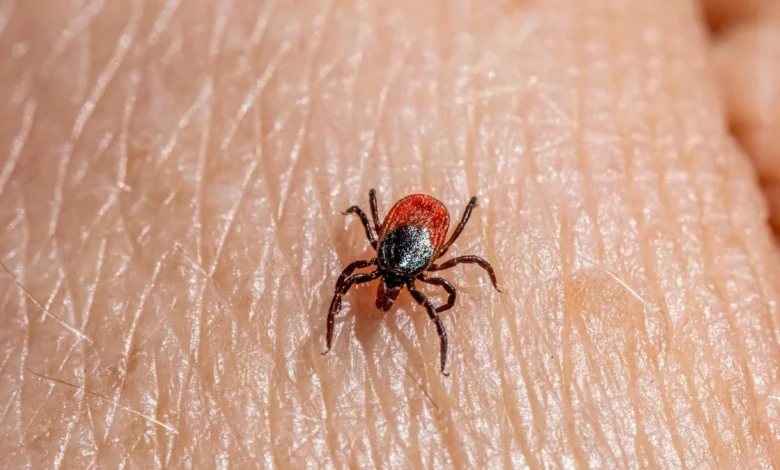What You Need to Know About Lyme Disease in 2025
A Complete Guide to Understanding, Preventing, and Treating Lyme Disease in 2025

Lyme disease is one of the most misunderstood and fast-growing infectious diseases in the world today. As we move through 2025, awareness and prevention have become more important than ever. This illness, transmitted through the bite of infected ticks, can affect anyone who spends time outdoors—from hikers and farmers to pet owners and children playing in the garden.
In this article, you’ll discover everything you need to know about Lyme disease in 2025—how it spreads, the warning signs to watch for, effective treatment options, and proven ways to protect yourself and your loved ones.
What Is Lyme Disease?
Lyme disease is a bacterial infection caused by Borrelia burgdorferi and, in some cases, Borrelia mayonii. The bacteria enter the body through the bite of infected black-legged ticks, also called deer ticks. Once inside, they can spread to the joints, heart, and nervous system if not treated early.
Ticks often thrive in warm, humid environments such as forests, grassy areas, and gardens. They are tiny and difficult to spot, making prevention and early detection essential.
How Lyme Disease Spreads
Ticks become infected after feeding on animals carrying Borrelia bacteria, like deer or rodents. When they bite humans, the bacteria can enter the bloodstream. The risk of infection increases the longer the tick stays attached, usually after 36 to 48 hours.
One of the main challenges in 2025 is climate change. Warmer temperatures have expanded the range where ticks can live, meaning more people around the world are now at risk of contracting Lyme disease.
Common Symptoms of Lyme Disease
Symptoms can vary depending on how long the infection has been in the body. Here’s what to look out for:
1. Early Symptoms (First Few Days or Weeks)
- A red rash that expands in a circular or bull’s-eye pattern
- Fever and chills
- Fatigue and muscle pain
- Headache and stiff neck
2. Later Symptoms (Weeks or Months After Infection)
- Joint pain or arthritis, especially in the knees
- Numbness, tingling, or nerve pain
- Irregular heartbeat
- Memory or concentration problems
If left untreated, Lyme disease can lead to long-term complications affecting the nervous system and joints.
Also Read: Everything You Need to Know About Tylenol: Benefits, Risks, and Safe Use
How Lyme Disease Is Diagnosed
Doctors usually diagnose Lyme disease based on symptoms, physical findings, and the possibility of exposure to infected ticks.
In 2025, diagnostic technology has improved. New blood tests can detect antibodies earlier and with greater accuracy. However, early testing may still give false negatives because it takes time for antibodies to appear. That’s why doctors often rely on both symptoms and test results for confirmation.
Treatment Options in 2025
The good news is that Lyme disease is treatable, especially when detected early. The main treatment is antibiotics.
Common Treatments Include:
- Doxycycline: The most prescribed antibiotic for adults and children over eight years old.
- Amoxicillin: Often used for younger children or pregnant women.
- Cefuroxime: An alternative for those allergic to other antibiotics.
For advanced cases involving the nervous system or heart, intravenous antibiotics may be recommended. After treatment, some people experience fatigue or pain for months, known as Post-Treatment Lyme Disease Syndrome (PTLDS).
Prevention Tips: How to Protect Yourself in 2025
Preventing tick bites is the best way to avoid Lyme disease. With ticks spreading to new areas due to climate change, staying vigilant is key.
Practical Prevention Steps:
- Use Tick Repellent: Choose one that contains DEET or permethrin.
- Wear Protective Clothing: Long sleeves, pants, and light-colored clothes make ticks easier to spot.
- Check for Ticks After Outdoor Activities: Especially behind the knees, underarms, and scalp.
- Keep Grass Short: Maintain your garden and avoid tall grassy areas.
- Shower After Outdoor Activities: It helps remove ticks before they attach.
Even your pets can bring ticks into your home, so check them regularly and use tick prevention treatments recommended by your vet.
Lyme Disease Myths vs. Facts (2025 Edition)
Myth 1: You can only get Lyme disease in rural areas.
Fact: Ticks can live in city parks, gardens, and playgrounds.
Myth 2: The rash always looks like a bull’s-eye.
Fact: Not everyone develops this classic rash—some have no rash at all.
Myth 3: Once you recover, you can’t get Lyme disease again.
Fact: Reinfection is possible if you’re bitten by another infected tick.
Myth 4: Lyme disease is rare.
Fact: Cases are increasing globally due to changing weather and expanding tick habitats.
The Global Situation in 2025
In 2025, health experts have observed a rise in Lyme disease cases not only in North America and Europe but also in parts of Asia and Africa. Improved detection methods have made it easier to identify cases, but awareness remains a challenge.
Governments and public health organizations are now focusing on education, early diagnosis, and promoting protective behavior among outdoor workers and travelers.
Living with Lyme Disease
Recovery can take time, especially for those diagnosed late. Many patients benefit from physical therapy, a balanced diet, and enough rest. Stress management and emotional support also play vital roles in recovery.
Joining support groups, both online and in-person, can help people share experiences, reduce anxiety, and find motivation during treatment.
Frequently Asked Questions
No. Without treatment, Lyme disease can worsen and cause serious long-term complications. Always seek medical help if you suspect infection.
Most people recover fully within a few weeks of antibiotics. However, some may experience lingering symptoms for months.
Yes, dogs and cats can also get Lyme disease from tick bites. They may develop fever, loss of appetite, and joint pain.
Researchers are working on a new vaccine, but as of 2025, it’s still under review and not yet widely available.
Yes. Being infected once does not provide lifelong immunity. You can get Lyme disease again if bitten by another infected tick.





2 Comments